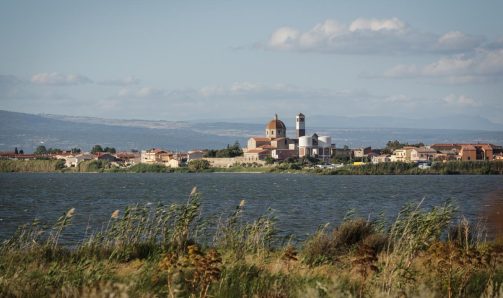In the approximately 30 kilometers of coastline overlooked by Cabras lies the marine protected area of the Sinis Peninsula, which stretches between the bay of Is Arenas and the Gulf of Oristano, including the island of Mal di Ventre and the islet of Catalano, which hide ancient wrecks in their depths. Opposite, on the Cabra coast, beaches made of fine grains of quartz, the work of the long action of wind and water on the limestone rocks of the area, plunge into the turquoise sea. Along the road to Is Arutas is the hamlet of San Salvatore di Sinis. Its low houses, gathered around a central spring, have caught the attention of film directors: the western film ‘Garter Colt’ (1968), belonging to the ‘spaghetti western’ cycle, was shot here.
A town of ancient origins, Cabras preserves some evidence of the Neolithic period, such as the village of Cuccuru Is Arrius and numerous nuraghi. Dated to the Iron Age (8th century B.C.), it is the largest archaeological discovery of the late 20th century in the Mediterranean basin, made at Mont’e Prama, the statuary complex of the Giants, chalky sandstone giants found in a large burial area on the hill, exhibited in part at the town’s Civic Archaeological Museum, named after the distinguished local personality Giovanni Marongiu. Today they are an identifying symbol of Sardinia. In the territory of Cabras are also the remains of the ancient city of Tharros, founded by the Phoenicians in the 8th century B.C. on an earlier nuragic village Here the history of Sardinia is summarized: flourishing commercial center in the Phoenician-Punic age, Roman urbs, then Byzantine, first capital of the Judicial era, frequented until the Middle Ages.
Source: Cabras | SardegnaTurismo – Official tourism website of the Region of Sardinia



